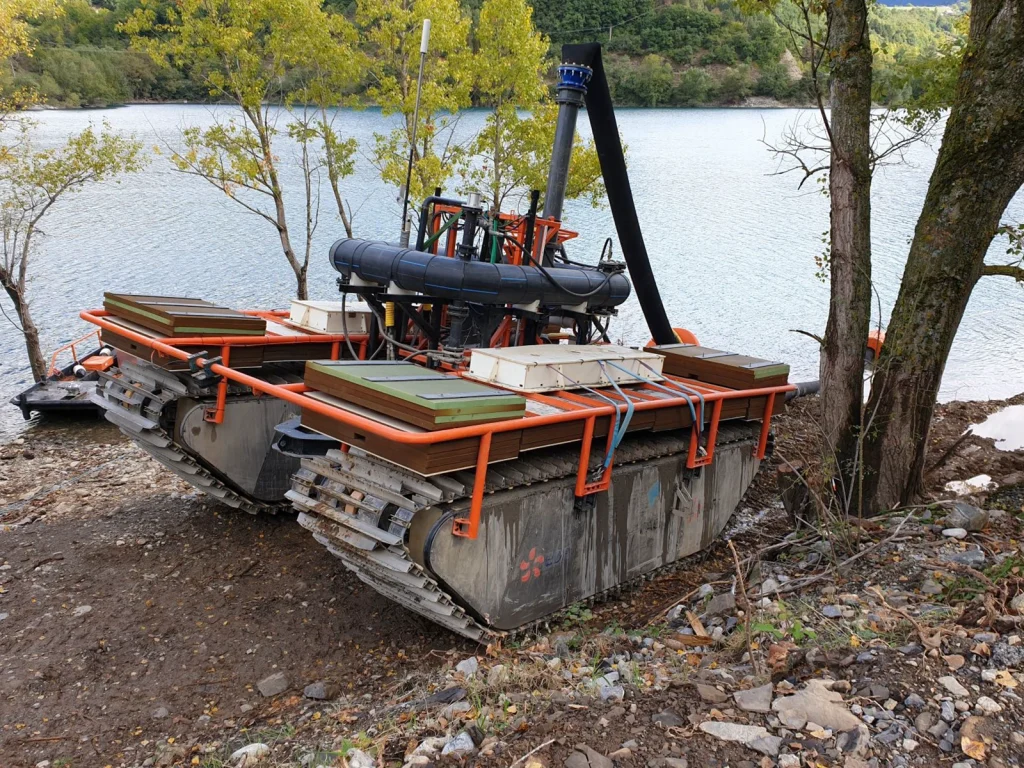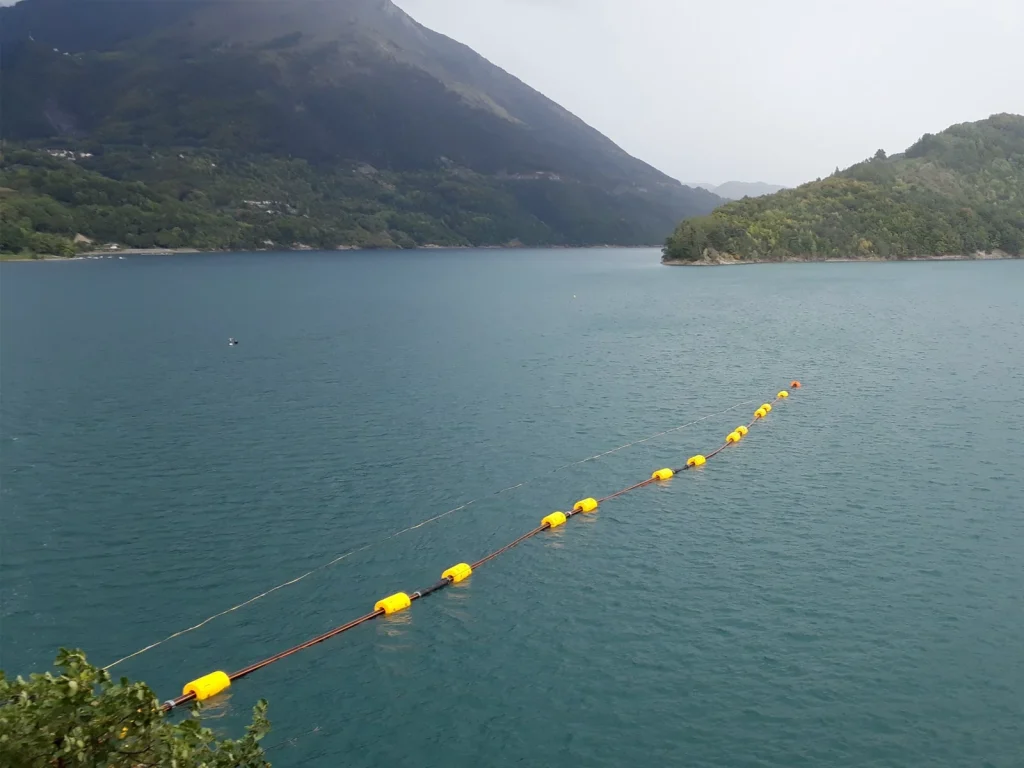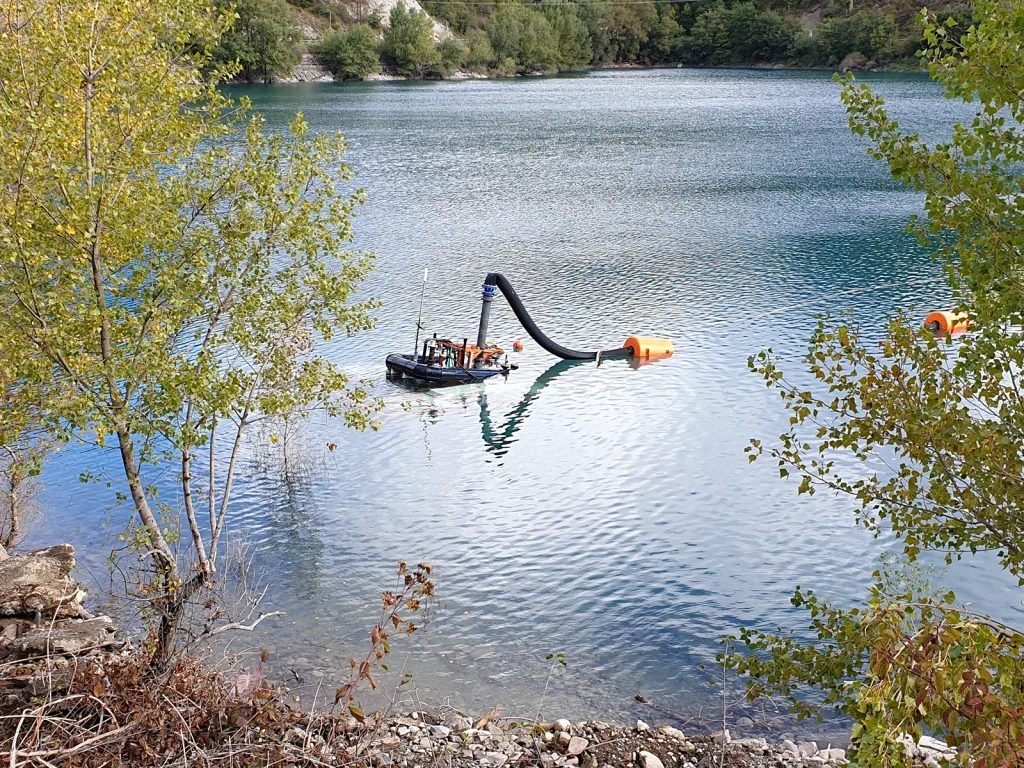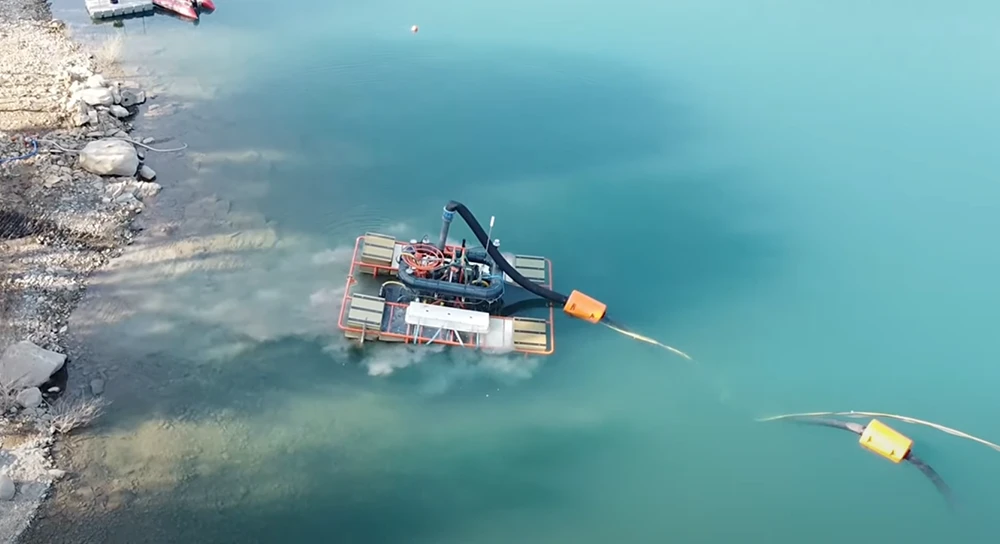Sautet dam: The industrial demonstrator of the NESSIE solution
In autumn 2020, the NESSIE robot demonstrated industrial-scale dredging at a depth of 60 m in the reservoir of the Sautet dam.
The Sautet dam, located on the Drac river in Isère, forms a reservoir with a capacity of 107.7 million cubic meters, covering an area of 348 hectares. Commissioned in 1935, the dam is 110 metres high and 80 metres long at its crest.
NESSIE, in its demonstrator version
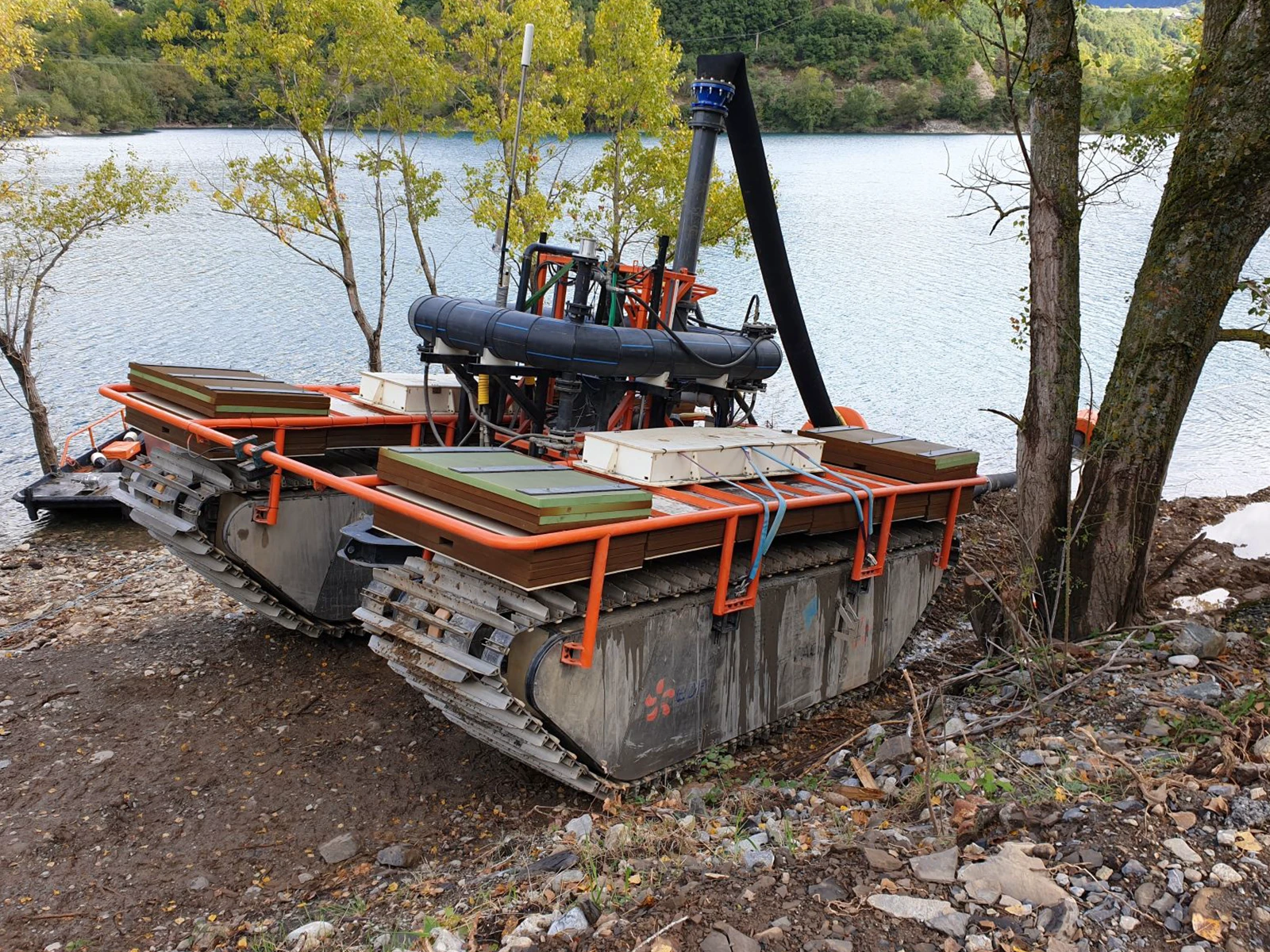
Pour cette première démonstration à l’échelle industrielle, Watertracks a déployé NESSIE, le robot de dragage autonome et continu, capable de traiter jusqu’à 150 tonnes de sédiments par heure jusqu’à 300 mètres de profondeur.
Mastering diving in the water column
This version of the robot, designed for dredging operations at great depths, features for the first time a device for plunging and rising in the water column using its own ballast tanks. This enabled the robot to be towed vertically over the dredging field, then sunk to work at a depth of 60m.
Demonstrating production capabilities
In an initial demonstration, the robot dredged 10,000m3 in 5 days. Then, in 3 days, the robot produced a conical dredging pattern up to 5 m deep in the sediment to simulate the release of a bottom discharge water intake.
Testing on-board measuring instruments
One of the special features of NESSIE is that it carries instruments for measuring the flow rate and concentration of pumped sediments. These instruments have been fitted in series with certified equipment to verify their reliability by comparing measurements.
This process enabled us to qualify the technologies marinized and embedded on the robot.
Autonomous and controlled dredging
The automatic dredging mode was tested. The robot follows its dredging plan autonomously, without human intervention, and adapts its forward speed to maintain a given dry matter production setpoint. This function is suitable for dilution dredging with constraints on the level of suspended solids in downstream watercourses.
Spectacular back-up function
In the event of damage to the robot with total loss of communication via its umbilical, a device can be used to remotely inflate rescue balloons. This ultimate rescue device was successfully tested during the demonstration at a depth of 63 meters.
